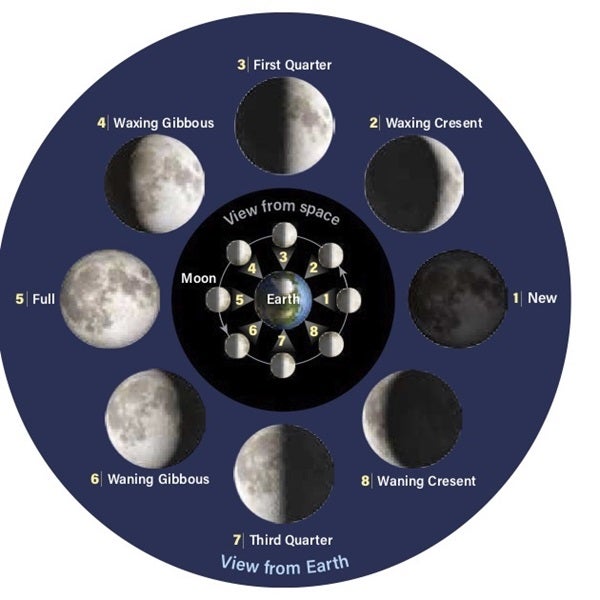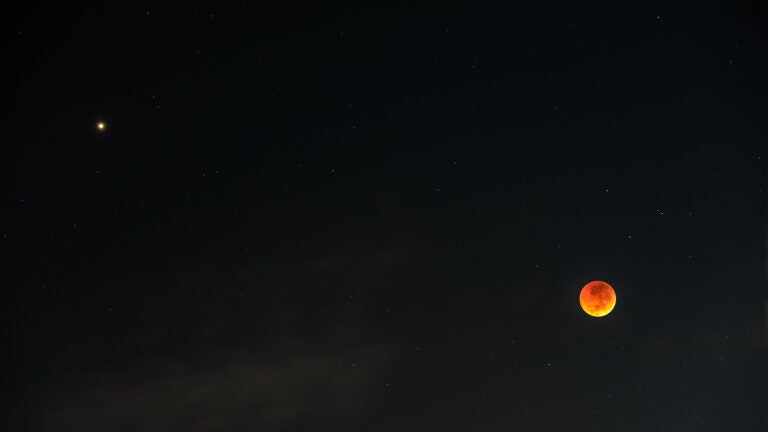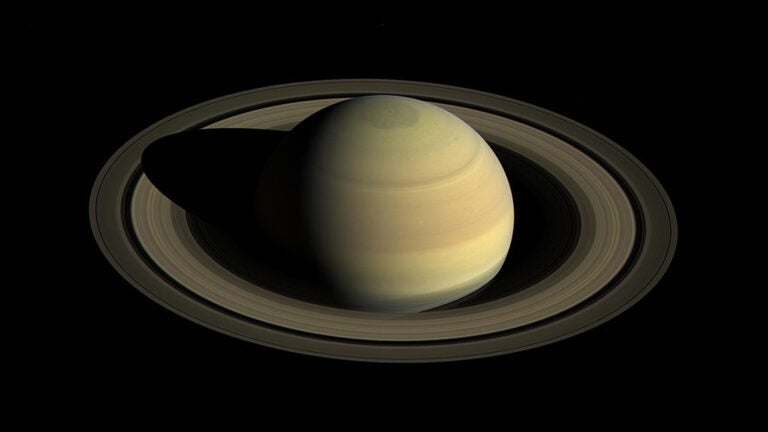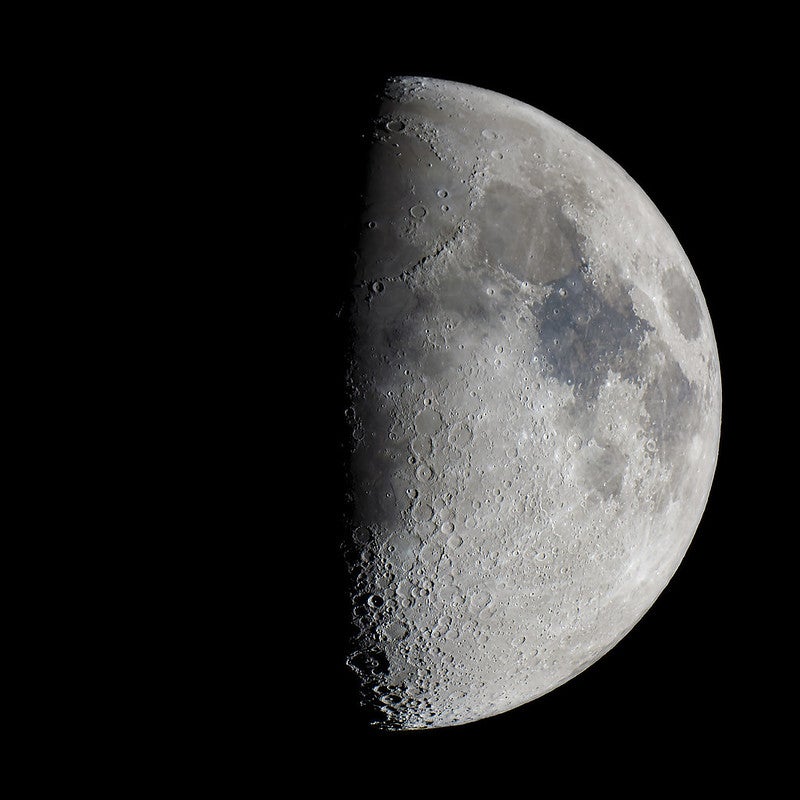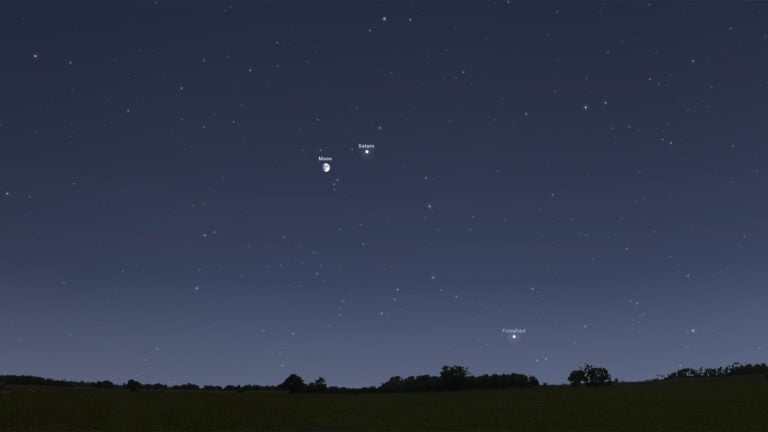Q: What happens to the Moon during New Moon?
A:From Earth, we only ever see one side of the Moon. This is because the time it takes the Moon to rotate around its own axis happens to be the same amount of time it takes for the Moon to orbit Earth: one month. This phenomenon is known as tidal locking. Since we only see one side of the Moon, how much of the Moon is visible to us over the course of a month depends on which part of the Moon is reflecting light from the Sun. And that depends on where the Moon is in its orbit around Earth.
In the image above, the Sun lights up only the half of the Moon that faces our star. From Earth, we see only the portion of the Moon that is both facing our planet and reflecting light.
In the case of a New Moon, the Moon is between Earth and the Sun, so the side of the Moon facing the Sun isn’t facing us. We can’t see any portion of the lit-up Moon during this phase. (When the Sun and Moon exactly line up, as viewed from Earth, we get a special experience known as a solar eclipse.)
You can simulate the phases of the Moon yourself at home with a lamp and baseball. Place the lamp (without its shade) on one end of a darkened room and stand on the opposite end of the room. By raising the baseball at arm’s length in front of you (so it faces the lamp), you can move slowly in a circle and see it go through the same phases as the Moon.

